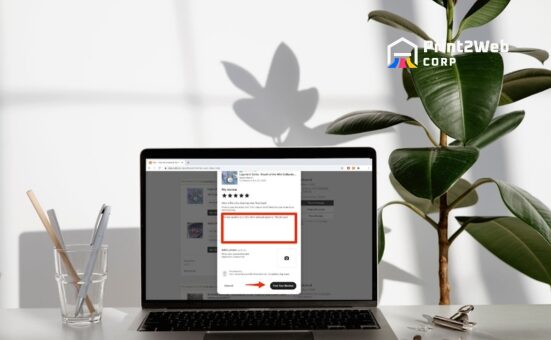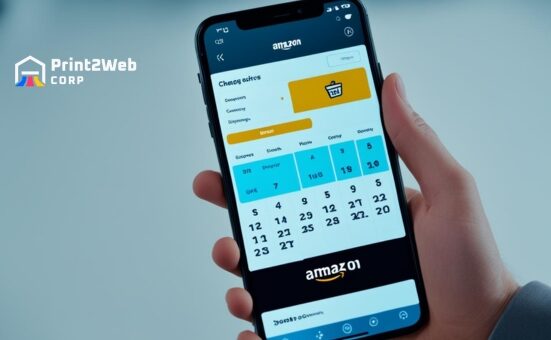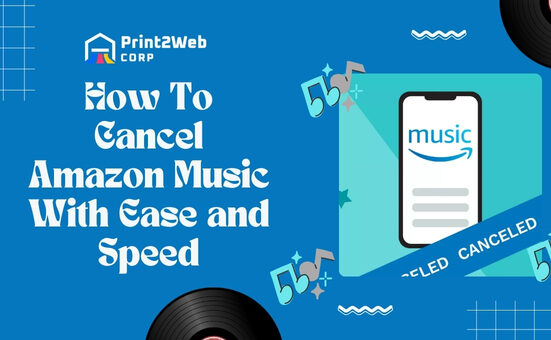When it comes to selling products online, you may have stumbled upon two popular phrases: Dropshipping vs. Amazon FBA. Each has its charm and challenges, but how do they stack up against each other? Picking the right e-commerce model is no small decision; it’s a choice that can shape your business’s future. Ready to learn which path could lead you to success?
If you’re torn between dropshipping and Amazon FBA for your online business venture, understanding their key differences and unique benefits is crucial. In a nutshell – Amazon FBA allows you to leverage the retail giant’s massive logistics network, while drop shipping gives you freedom from inventory management with potentially lower startup costs.
What You’ll Learn Here:
- The basics of dropshipping versus Amazon FBA
- Clear breakdown of pros and cons
- Insider tips on starting your dropship venture
- Expert courses to refine your strategies
- Real-talk comparison on potential earnings
Understanding Amazon FBA and Dropshipping
When it comes to online businesses, comparing Dropshipping vs. Amazon, FBA can often leave people uncertain about which model suits them best. The two platforms differ significantly, but both offer great opportunities if used correctly.

What is Amazon FBA?
Amazon FBA (Fulfillment by Amazon) is a business model that allows you to store your products in one of Amazon’s fulfillment centers or warehouses. Here’s how it works: You ship your products to an Amazon fulfillment center, and they handle storage, packaging, and shipping for you when an order is placed.
This process means that you’re privy to the reach and convenience of one of the world’s most expansive online marketplaces – a definite advantage in the “Dropshipping vs. Amazon FBA” debate.
What is Dropshipping?
On the other side of the “Dropshipping vs. Amazon FBA” comparison is dropshipping- a retail model where the seller doesn’t keep stock on hand but rather purchases products directly from third-party suppliers who then ship the products directly to the customer.
This model puts more control in your hands, although it also comes with its fair share of pros and cons. In future sections, we’ll dive further into these aspects to give a clearer idea if either of these business models may be a good fit for you.
Also Read: Unlock Amazon Success: Become an Authorized Reseller Today!
How Does Dropshipping Differ From Amazon FBA?
When comparing dropshipping vs. Amazon FBA, there are key differences to consider. Each has distinct benefits and drawbacks, which can impact your decision depending on your specific needs, resources, and business goals.

Key Benefits of Dropshipping
One of the main reasons people gravitate towards dropshipping is due to the low startup costs. This business model requires minimal initial investment because you don’t have to purchase any inventory upfront. Instead, you only pay for the items that customers order from your online store.
Secondly, there are no stock hassles with dropshipping. There’s no need for storage space as you never personally handle the goods you sell. The supplier takes care of storing all products and ships them directly to your consumers once they make a purchase.
Lastly, dropshipping allows for a wide product range. Given that you aren’t buying large quantities of stock initially, it’s easier to experiment with different products and find what sells best for your target market without losing much money.
- Low startup costs
- No stocking or handling of inventory
- Flexibility in product offerings
Key Benefits of Amazon FBA
On the other hand, with Amazon FBA (Fulfillment by Amazon), one major advantage lies in brand credibility and customer trust. As a seller on this platform, where millions of customers already shop daily – my listings will potentially reach more eyes.
Furthermore, utilizing an established customer base reduces marketing efforts drastically since many people search directly on Amazon when wanting to buy something online.
Logistics are also well-handled via Amazon’s responsive delivery system backed by world-class infrastructure facilities where they house products after I ship them in bulk upon successful enrolment into their program.
- Increased brand exposure
- Access to established customers
- Hassle-free logistics
Drawbacks Related To Dropshipping
While dropshipping may appear attractive at first glance due largely to the advantages outlined before, there are a few drawbacks I’ve encountered, too.
In particular, supplier errors are one of the biggest challenges with dropshipping. If suppliers make mistakes or send out inferior products, this can negatively reflect on my business and damage brand’s reputation.
Customer dissatisfaction could also lead to returns and refunds that eat into the razor-thin profit margins typical of dropshipping. I’m merely serving as an intermediary between manufacturers or wholesalers and end consumers.
Another drawback is heightened competition since barriers to entry in dropshipping are relatively low. This can result in price wars that further squeeze profits.
- Supplier errors could impact reputation.
- Lower profit margins
- High competition levels
Overall, it’s crucial to bear in mind these pros and cons when deciding between Dropshipping vs. Amazon FBA for your e-commerce venture.
Choosing Between Dropshipping vs. Amazon FBA
Before making the final decision of choosing between dropshipping and Amazon FBA, you need to understand fully what each model entails. Here’s the most important part: there’s no “one-size-fits-all” answer!
The best model for you depends on several factors. These may include your available startup capital, eCommerce experience, level of involvement in operations, and your risk tolerance.
Which Business Model Suits You Best?
Let’s delve into how you can choose what’s best for you in this Dropshipping vs. Amazon FBA face-off.
- Available Capital: In any business venture, the startup capital is one of the major determinants of which type of business to launch. Personally speaking, if funds are tight or minimal, dropshipping would be your best bet because it requires a low initial investment – you don’t really need to purchase an inventory upfront.
- eCommerce Experience: With experience comes knowledge – if I have been selling online for a while and am familiar with handling customer service inquiries and supplier relationships, operating a dropshipping store won’t be new territory for me.
- Operational Involvement: How involved do I want to be? For instance, if I prefer focusing on marketing and customer acquisition without worrying about order fulfillment or logistics issues that come with maintaining inventory like warehousing or handling returns, then using Amazon FBA (Fulfillment by Amazon) would be more suitable as they handle these tasks on my behalf.
- Risk Tolerance: This is often overlooked but very crucial! If I am able to handle risks such as supplier errors or product quality issues linked with the dropshipping business, then that model could work well for me.
- Mission & Vision: Am I looking at this as a short-term venture, or am I thinking long-term? Since building a recognized brand takes time along with a decent amount of capital, and if that’s my priority, then opting for Amazon FBA would serve me better since customers often trust known brands.
- Geographical Aspect: Are my customers based locally, regionally, or internationally? Dropshipping could provide more flexibility in this regard, as I can reach customers worldwide without worrying about international shipping logistics.
So, before making your ultimate “Dropshipping vs. Amazon FBA” decision, carefully weigh the features and benefits that both bring to the table. It’s not all black and white either – remember, there’s always the option to use a hybrid model!
Also Read: How Much Are Pokemon Cards Worth? A Complete Guide
Steps in Starting a Dropship Venture on Amazon
If you’ve decided to hop onto the dropshipping train and aim for Amazon as your platform, it’s essential that you know the crucial steps involved. Whether you choose dropshipping or Amazon FBA will heavily depend on various factors, but if dropshipping is your call, follow these key steps:

How to Dropship on Amazon?
Dropshipping can seem overwhelming at first. However, once you understand the basic workflow, it becomes significantly easier. Here’s a simple step-by-step breakdown of how to get started with a dropship venture on Amazon.
- Set up an account – Start by setting up an Amazon selling account; it’s fairly straightforward and quick.
- Find products – The next step is to find what items you want to sell. This could be anything from clothing and accessories to books or tech gadgets.
- Find suppliers – Once you’ve nailed down what product categories attract your interest, seek out reliable suppliers who can provide these items.
- List products – Now that you have your supplier and products figured out, list those goods on your online storefront.
- Utilize the “fulfilled by merchant” option – **Instead of managing inventory yourself, let the supplier handle shipping and delivery with this selection.
Finding a Product
Choosing the right product is probably one of the most critical parts of starting a successful dropship business on Amazon. Here are some points that necessitate focus when finding products:
- Choose niche categories – It’s profitable if we stick to small categories where competition might not be as fierce.
- Avoid easily breakable items – In order to prevent negative reviews stemming from damages during deliveries.
- Leverage SEO tactics while listing – A well-optimized listing garners better visibility amongst potential customers, enabling faster sales turnover.
- Low-maintenance goods – It’s advisable to choose items that don’t require frequent customer support post-purchase.
Searching for Suppliers
Suppliers are the backbone of any dropshipping business model. One wrong step here could lead to catastrophic issues like unsatisfied customers, delayed shipping times, and possibly low-quality products. Therefore, you must choose your suppliers wisely. Several trustable sources to find suppliers include:
- Wholesale directories
- Online eCommerce forums and platforms
- Trade show directories
- Local businesses that might provide wholesale pricing
When establishing a relationship with a supplier, check out their delivery times, product quality, and credibility within the market. Always remember to ask for samples before you decide on partnering with one. This will allow you an in-person quality check, which can significantly reduce future complaints or bad reviews.
Starting a dropship venture on Amazon can open doors to new opportunities if done correctly. Remember these steps while setting up your venture, and let the journey of entrepreneurship unfold!
Top-Suggested Drop Shipping Companies
To employ everything learned through these courses effectively, one must tie up with trustworthy suppliers:
- Aliexpress: Known globally as one of the biggest eCommerce platforms, it presents an extensive range of products, making it an ideal rendezvous for drop shippers.
- Doba: Doba provides a convenient platform where retailers can source products directly from suppliers. The easy-to-use interface helps in maintaining smooth operations.
- SaleHoo: This New Zealand-based firm boasts of over 8000+ vetted suppliers and a rich database carrying millions of products that ensure you never fall short on diversity and quality for your store.
Whether you decide to hop onto Amazon FBA or prefer the path of Dropshipping, learning from experts via online courses and associating with reliable companies should be your first step toward success in this domain. After all, knowledge is the key that unlocks potential growth opportunities in any venture!
Also Read: Navigating Negative Amazon Customer Reviews: Expert Tips
Evaluating Whether Dropshipping on Amazon is Worth It?
Deciding to jump into e-commerce ventures like dropshipping or Amazon FBA may seem exciting, but it’s also essential to consider whether the effort will be worth it in the end.
Now, if you’re specifically wondering if dropshipping on Amazon is a worthwhile venture, let me guide you through some factors that could help settle this dilemma.
Comparing Results – Amazon FBA vs Dropshipping Income
A key element to reflect upon when weighing your options between Dropshipping vs. Amazon FBA is their respective profitability. Although both business models have the potential for good earnings, the income can greatly differ based on numerous factors, such as your chosen products, marketing strategies, and customer base.
- Profit Margins: Being a drop shipper can sometimes mean lower profit margins compared to sellers using Fulfilment by Amazon (FBA) because of higher costs due to paying suppliers and shipping fees for every order. However, I must also mention that with effective supplier negotiation and smart product selection, this shortcoming can be minimized.
- Operating Expenses: Remember that an Amazon FBA seller would require enough capital upfront, mainly for inventory purchase and storage fees at Amazon’s warehouses. On the flip-side, in dropshipping you typically don’t need high initial capital since there are no inventory costs involved. Despite the points above regarding profit margin and operation expenses of Dropshipping vs. Amazon FBA, your success really boils down to how effectively you use these platforms’ features along with proper business planning.
Before drawing any conclusions regarding incomes from both models based only on other’s experiences or hearsay – always make sure you analyze whether maintaining an inventory (which can be expensive) with FBA suits your budget better or working on slimmer profit margins with dropshipping feels more in line with your business goals!
Another important aspect while comparing Drop shipping vs. Amazon FBA income is to look at the user buying patterns, competition, and how well you can adapt or perform under those demands.
FAQs
Which is more profitable, dropshipping vs Amazon FBA?
Comparing profits between Dropshipping and Amazon FBA is not a clear-cut case since both models have their unique benefits and drawbacks. Profitability can depend on factors like product choice, overhead costs, and the volume of sales.
Is it better to use Amazon FBA or ship yourself?
If you have storage space at a reasonable cost and can manage packing and shipping efficiently, then self-shipping could be an option. But for those with limited resources or experiencing high sales volumes, using Amazon FBA might be more convenient despite its fees.
What is more profitable than dropshipping?
While dropshipping is a common choice due to low startup costs, other business models, such as wholesaling or creating your own products, may yield higher profits but require significant investments upfront.
Is it best to dropship on Amazon?
Dropshipping on Amazon does offer exposure to a vast customer base but comes with strict policies that need adherence. Although it can provide an excellent kick-start for beginners, in the long run, focusing on establishing your own online store could prove more beneficial.
Also Read: MAP Pricing on Amazon: Master the Enforcement Game
Conclusion
To wrap things up, determining the best for you between dropshipping vs. Amazon FBA comes down to your personal circumstances, resources, and business goals. Each has its highlights and drawbacks. Amazon FBA might give you a faster push with a prepared customer base, while drop shipping offers more control over branding and minimal investment risk.







